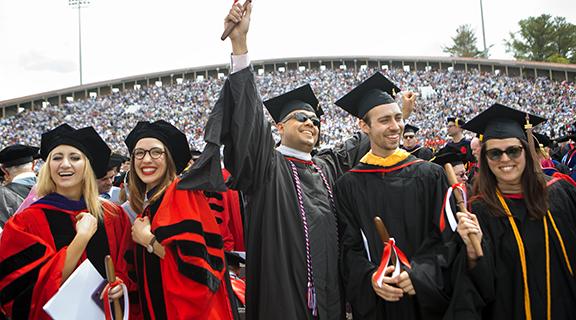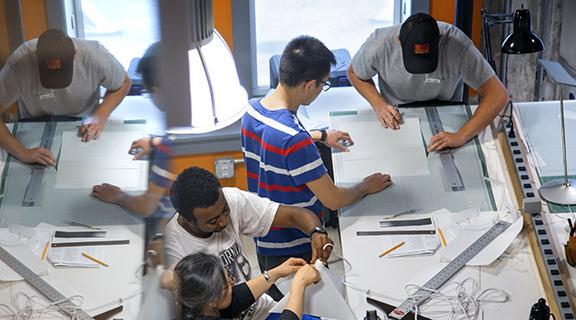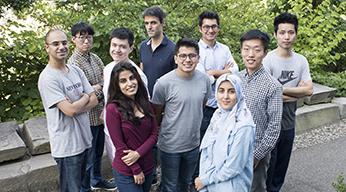
Admissions
Why Cornell Engineering?
"Scientists study the world as it is; engineers create the world that never has been."—Theodore von Karman
Cornell engineers challenge the status quo and do great things. Steeped in an environment of questioning, and with a focus on innovation, Cornell Engineering pursues excellence in all areas. Its faculty, students, and alumni design, build, and test products, improve the world of medicine, inform and shape our laws, create and drive businesses, become research luminaries, and overcome real and perceived barriers to achieve scientific breakthroughs that advance the quality of life on our planet.
We invite you to learn more about Cornell Engineering and its programs.
Did you know?
Rick Johnson, Cornell professor of engineering, who holds a Ph.D. in engineering with a Ph.D. minor in art history, developed a process that can help verify paintings based on the weave pattern of the canvas. In 2013, his technique helped authenticate a long-lost Vincent van Gogh painting “Sunset at Montmajour.”
Assistant Professor Paul Hartman (Physics, Ph.D., 1938) was one of the first to investigate the use of X-rays generated as a byproduct of high-energy electron accelerators. This go on to inform the X-ray diffraction studies at facilities such as Cornell’s High-Energy Synchrotron Source (CHESS).
C dots were invented in 2005 by Prof. Uli Wiesner.These silica-based nanoparticles are less than 10 nanometers in size and are small enough to pass through the body undetected. Researchers are looking at C dots as a possible diagnostic tool for delivering treatments for cancer and other illnesses into targeted parts of the body.
Olive Wetzel Dennis, (Civil Engineering, B.S., 1921) was the second woman to earn a civil engineering degree from Cornell. She transformed the design of mass transit by becoming first "service engineer" at the B&O Railroad and was also the first female member of the American Railway Engineering Association.
William Jewell, professor emeritus in the Department of Biological and Environmental Engineering, developed a nationally recognized initiative that employs animal manure in anarerobic digestion systems to produce electricity and heat on a farm.








